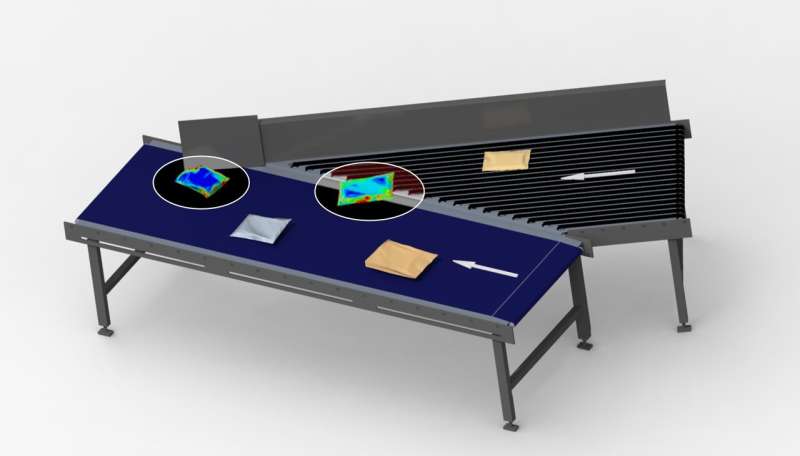
Non-rigid postal items with flexible packagings—such as poly bags—pose problems for logistics companies during automatic sorting. Thanks to modern simulation methods, there is now a widely applicable solution.
Anyone who orders something online would like to have the parcel delivered reliably, quickly, and undamaged.
The sharp rise in the number of different types of mailing bags and mailing sacks in recent years—postal items with flexible packaging and a limited degree of dimensional stability—has made it increasingly difficult for logistics service providers to offer this service. In contrast to solid cardboard packages, such bags and sacks change shape during transport and can, therefore, interfere with reliable automatic sorting.
The Institute of Logistics Engineering at the Graz University of Technology (TU Graz), Österreichische Post (Austrian Post), and Körber have tackled this problem. Using realistic physical simulations, they have developed a solution that can also be used outside of parcel postage.
Parcel volume requires automation
"The number of mailing bags has risen sharply in recent years, particularly for shipments from the Far East, due to the lower costs," explains project manager Christian Landschützer from the Institute of Logistics Engineering at TU Graz.
"To cope with the large volumes, logistics specialists sort the consignments automatically, and with the method we have developed, this can now be done more reliably with mailing bags than before. As far as we know, we are currently the only ones in the world to have tackled this issue."
This method, which allows the behavior of a mailing bag to be simulated with physical precision, makes it much easier to virtually track, recognize, physically describe, and, therefore, sort a shipment on its journey through a logistics center. A practical feature of the solution is that it can be applied to numerous other flexible packaging solutions with loose contents in the form of bulk or piece goods. And it is also fit for the future, as it can be used to simulate future changes in packaging materials.
Measuring during operation
The first step in developing the realistic simulation was to find out what types of parcels are on the move. To do this, the researchers had to measure numerous parcels and describe their characteristics—all this was carried out at an Austrian parcel sortation center during operation since they could not take the parcels away with them for examination. The research team grouped the different package types into classes—known as clusters—and set about recreating these classes.
Experiments were carried out with the replicas of these package types at Körber's test facility on Lake Constance. The test results provided data for calibrating the parameters of the simulation model. This was created using modern multi-body-dynamics and mechanical-physical simulation methods that can precisely reproduce the real behavior of a consignment. Of particular interest are the forces acting on the parcels, which were analyzed.
Logistics companies can now use the clusters and their realistic simulation to improve the recognition and processing of consignments in their sorting systems. Producers of conveyor technology, such as project partner Körber, are utilizing the findings for the new and further development of sorting systems in a virtual environment.
Follow-up project on parcel interaction in progress
"Although the problem of flexible packaging comes from the postal sector, it was important for us to look at the topic from the perspective of basic research in order to find a solution for several areas of application. This means that a wide variety of sectors can benefit from our results," says Christian Landschützer.
The Institute of Logistics Engineering would now like to utilize the research results of the ISAAK project for a follow-up project already in preparation. Instead of just one, several mailing bags and their interaction with each other will then be simulated in order to further improve the description of consignments in the sorting process.
Citation: A digital twin for flexible parcel postage (2024, March 1) retrieved 1 March 2024 from https://techxplore.com/news/2024-03-digital-twin-flexible-parcel-postage.html
This document is subject to copyright. Apart from any fair dealing for the purpose of private study or research, no part may be reproduced without the written permission. The content is provided for information purposes only.
